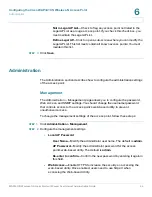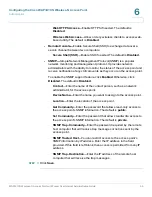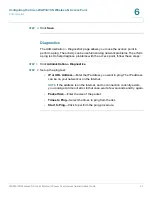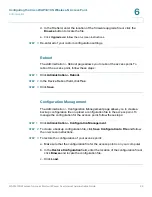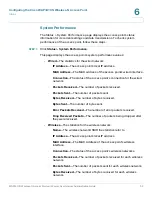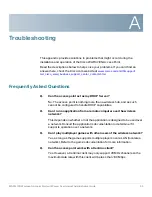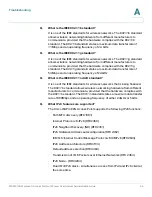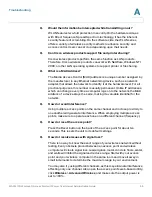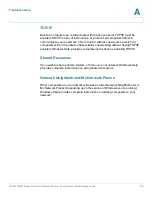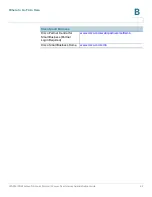
Troubleshooting
WAP4410N Wireless-N Access Point with Power Over Internet Administration Guide
55
A
Q.
What is the IEEE 802.11b standard?
It is one of the IEEE standards for wireless networks. The 802.11b standard
allows wireless networking hardware from different manufacturers to
communicate, provided that the hardware complies with the 802.11b
standard. The 802.11b standard states a maximum data transfer rate of
11Mbps and an operating frequency of 2.4 GHz.
Q.
What is the IEEE 802.11g standard?
It is one of the IEEE standards for wireless networks. The 802.11g standard
allows wireless networking hardware from different manufacturers to
communicate, provided that the hardware complies with the 802.11g
standard. The 802.11g standard states a maximum data transfer rate of
54Mbps and an operating frequency of 2.4GHz.
Q.
What is the IEEE 802.11n draft standard?
It is one of the IEEE standards for wireless networks that is being finalized.
The 802.11n standard allows wireless networking hardware from different
manufacturers to communicate, provided that the hardware complies with
the 802.11n standard. The 802.11n standard states a maximum data transfer
rate of 600Mbps and an operating frequency of either 2.4GHz or 5 GHz.
Q.
What IPv6 features are supported?
The Cisco WAP4410N Access Point supports the following IPv6 functions:
-
Path MTU discovery (RFC1981)
-
Internet Protocol v6 -IPv6 (RFC2460)
-
IPv6 Neighbor Discovery (ND) (RFC2461)
-
IPv6 Stateless Address autoconfiguration (RFC2462)
-
ICMPv6: Internet Control Message Protocol v6 ICMPv6 (RFC2643)
-
IPv6 Address architecture (RFC3513)
-
Default address selection (RFC3484)
-
Transmission of IPv6 Packets over Ethernet Networks (RFC 2464)
-
IPv6 Node - (RFC4294)
-
Dual IPv4/IPv6 stack - simultaneous access from IPv4 and IPv6 client at
the same time.




